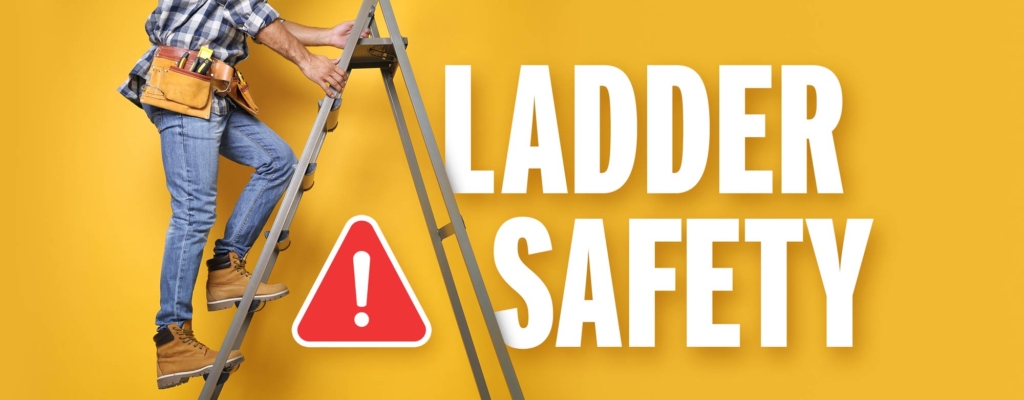March is National Ladder Safety Month, let’s look at ladder selection.
Before you get started on your next project, you have to choose a ladder, but how do you know what type to choose?
With different types and materials to choose from, the options may be overwhelming. Thankfully, the American Ladder Institute (ALI) provides some guidance and factors to consider.
Environment
The location and surroundings of where the ladder will be used are important to consider. Will there be any uneven surfaces? Will it be a crowded area? Are there other factors you need to account for? If any electrical lines are nearby, ALI notes to not use a metal ladder.
Length
When picking a ladder, ensure that it’s neither too short nor too tall as both can be hazardous. If you’re considering a step ladder, know that the top cap should not be used as a step, and for extension ladders, you never want it to exceed “more than three feet beyond the upper support point,” ALI said.
Extension ladders should also be set up using the 4:1 rule: When the ladder height reaches four feet, the ladder must be moved one foot away from the structure, with this pattern continuing every additional four feet reached.
Duty Rating
As workers will be using the ladder, it’s essential to take into account the duty rating, which represents how much weight the ladder can hold. There’s a simple equation you can use to determine what duty rating is best for your project. You’ll need to know the weights of the worker, any clothing and equipment and the tools and supplies, per the ALI. Once you have these numbers, add them all together and find the corresponding duty rating.
- A ladder with a type III duty rating can support 200 pounds.
- A ladder with a type II duty rating can support 225 pounds.
- A ladder with a type I duty rating can support 250 pounds.
- A ladder with a type IA duty rating can support 300 pounds.
- A ladder with a type IAA duty rating can support 375 pounds.
A Bonus: Personal Preference
After all of the previously listed elements are considered, there are still more questions you can ask yourself. According to the American National Standards Institute, you may want to also think about personal preference and “practical concerns.” Do you want to be able to easily transport the ladder? Is storage a concern? Does appearance matter?
Celebrated every March, National Ladder Safety Month—led by the ALI—focuses on education and awareness of ladder use.
*Thanks to our friends at Occupational Health and Safety for content in this article
Recent Posts
Poison Ivy, Oak & Sumac Safety Guide for Landscaping, Construction, and Outdoor Workers
Why Construction and Outdoor Workers Need to Know About Poison Plants The CDC reports that 80-90% of adults develop rashes from poison ivy exposure, and [...]
Multi-State Business Operations: Insurance and Compliance Strategies for Growing New Hampshire Auto Companies
Picture a successful New Hampshire automotive dealership that starts with a single location in Manchester. Over time, they expand their service territory, hire employees who [...]
Revolutionary HSA Changes in the 2025 Budget Bill: Your Complete Guide to Expanded Benefits
Introduction: A Game-Changer for Healthcare Financial Planning The 2025 federal budget reconciliation bill, recently passed by the House, introduces the most significant expansions to Health [...]




